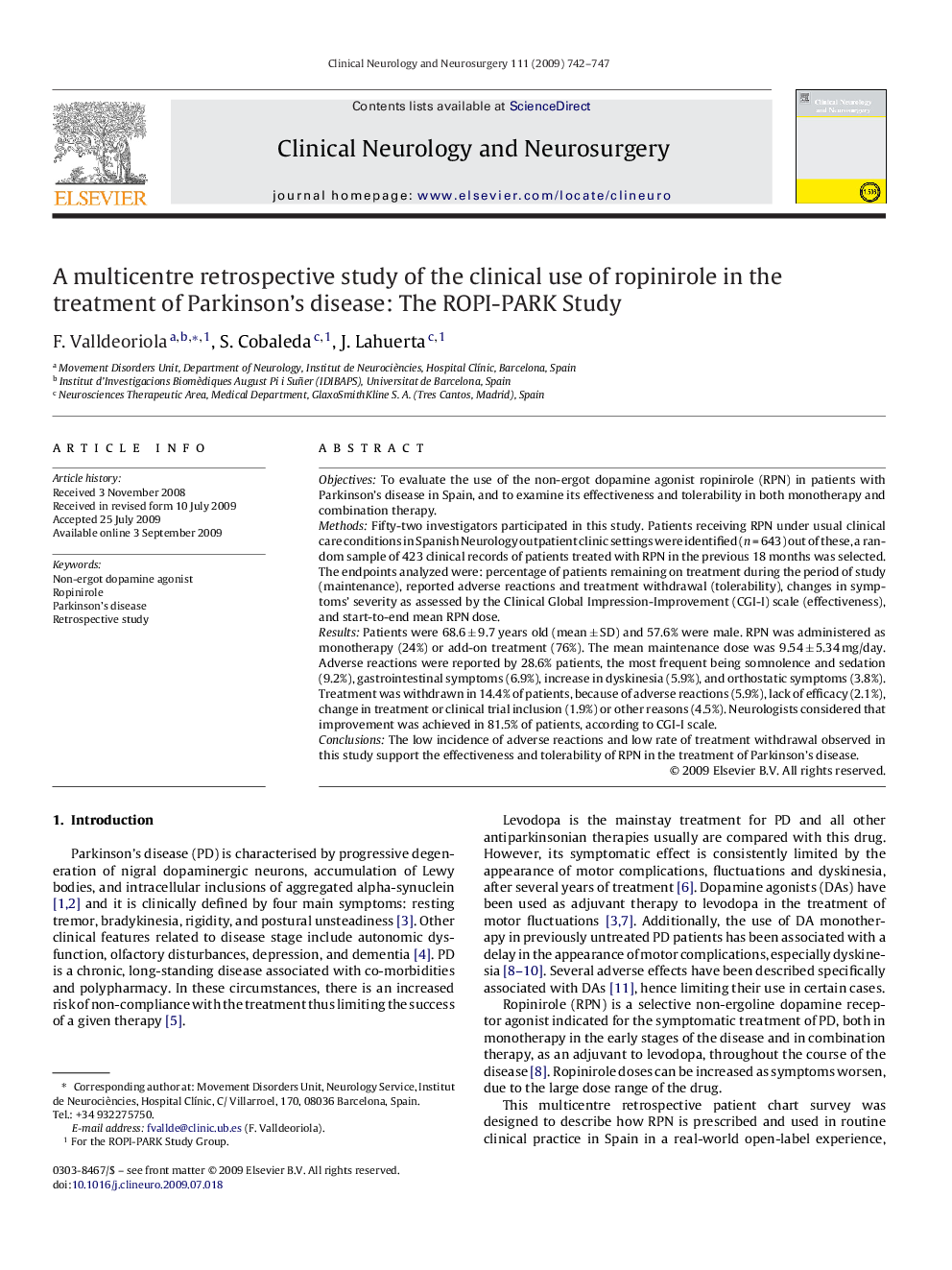| Article ID | Journal | Published Year | Pages | File Type |
|---|---|---|---|---|
| 3041396 | Clinical Neurology and Neurosurgery | 2009 | 6 Pages |
ObjectivesTo evaluate the use of the non-ergot dopamine agonist ropinirole (RPN) in patients with Parkinson's disease in Spain, and to examine its effectiveness and tolerability in both monotherapy and combination therapy.MethodsFifty-two investigators participated in this study. Patients receiving RPN under usual clinical care conditions in Spanish Neurology outpatient clinic settings were identified (n = 643) out of these, a random sample of 423 clinical records of patients treated with RPN in the previous 18 months was selected. The endpoints analyzed were: percentage of patients remaining on treatment during the period of study (maintenance), reported adverse reactions and treatment withdrawal (tolerability), changes in symptoms’ severity as assessed by the Clinical Global Impression-Improvement (CGI-I) scale (effectiveness), and start-to-end mean RPN dose.ResultsPatients were 68.6 ± 9.7 years old (mean ± SD) and 57.6% were male. RPN was administered as monotherapy (24%) or add-on treatment (76%). The mean maintenance dose was 9.54 ± 5.34 mg/day. Adverse reactions were reported by 28.6% patients, the most frequent being somnolence and sedation (9.2%), gastrointestinal symptoms (6.9%), increase in dyskinesia (5.9%), and orthostatic symptoms (3.8%). Treatment was withdrawn in 14.4% of patients, because of adverse reactions (5.9%), lack of efficacy (2.1%), change in treatment or clinical trial inclusion (1.9%) or other reasons (4.5%). Neurologists considered that improvement was achieved in 81.5% of patients, according to CGI-I scale.ConclusionsThe low incidence of adverse reactions and low rate of treatment withdrawal observed in this study support the effectiveness and tolerability of RPN in the treatment of Parkinson's disease.
